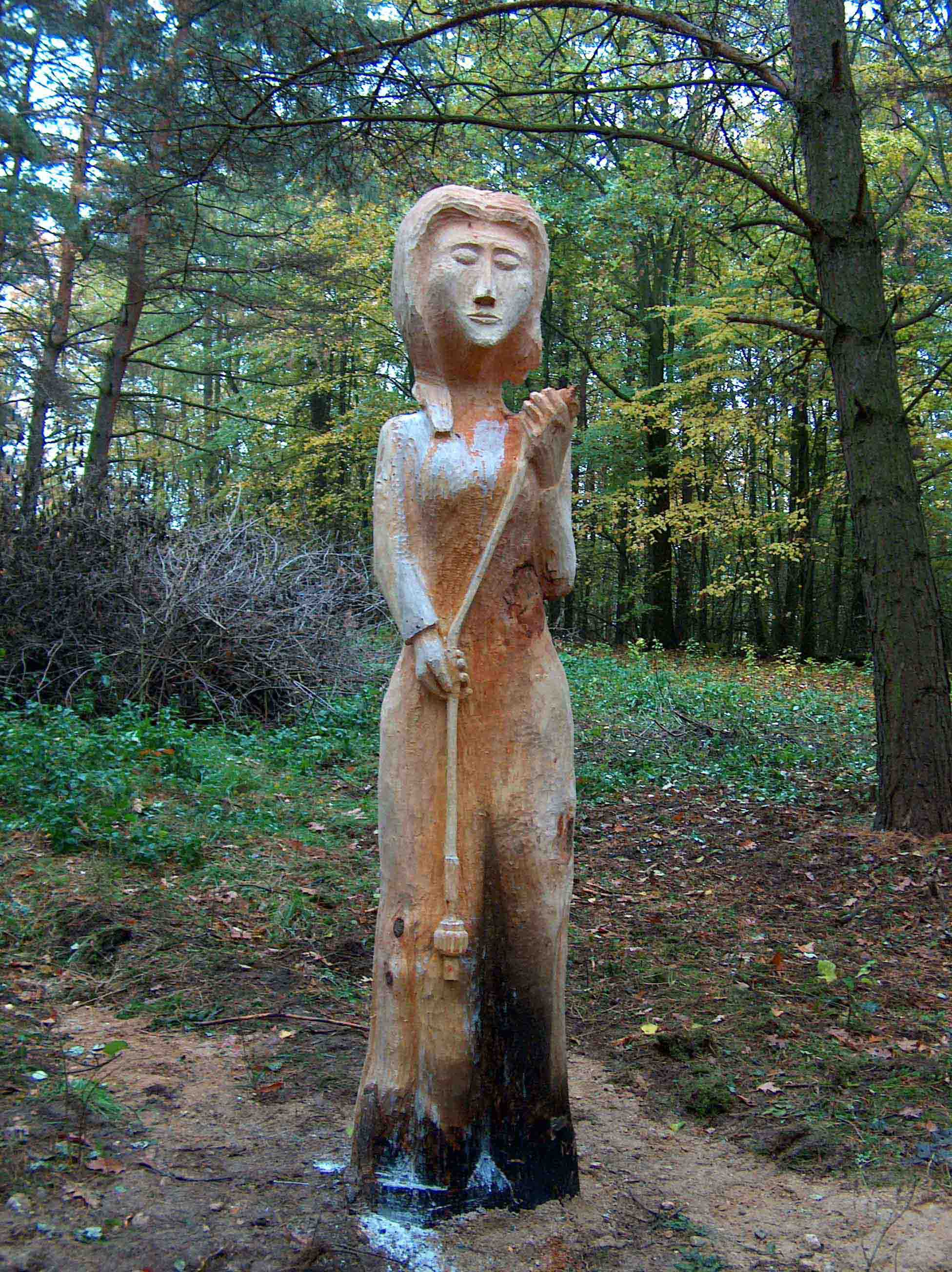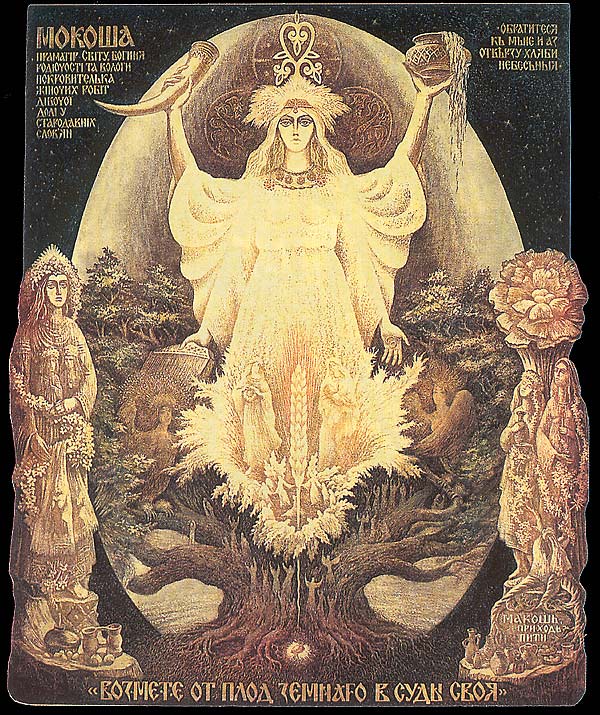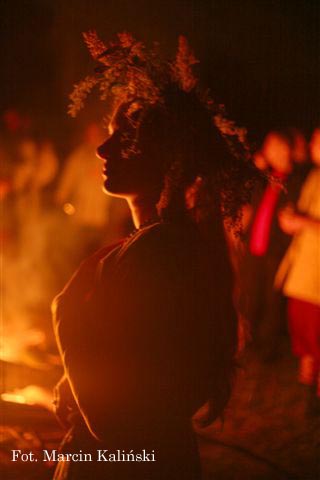




Whether they are one and the same Diety is
open to much debate, and I found strong arguments arguing both cases in my
research. I choose to see her as a significant and distinct Diety, worthy of
acknowledgement and veneration in her own right.
In Russian folklore she is referred to as both griaznaia
(muddy) and l'nianitsa (flaxen), thus she is both mother and daughter, the earth
and the crop. In Ukrainian folklore, the goddess-saint tells the peasants that
they are using her hair when they spin.
Image courtesy of www.rodzimawiara.pl
After the introduction of Christianity, she became assimilated into the Virgin Mary and Saint Paraskeva in Russia (as did much of the Slavic pantheon, where the transition into sainthood was smooth, and ritual observances were assimilated into Church life). Christian writers as late as the 16th century CE complained that women still honored Mokosh; and country folk throughout the Slavic countries still adhere to the seasonal calender of their ancestors, albeit in a modern, secularised form.
She is the One who enables the harvest…she is connected to all vegetation and particularly cereal crops and vegetables; in her role as patron of spinners and weavers, she presides over sheep.
She is sovereign over the domowije, the house spirits responsible for maintaining order in the household.
Mokosz is protectress of women and the female embodiment of Deity in a culture that has traditionally been patriarchal, and where much of the power has been in the hands of men. In her role as fertility goddess, mothers and children are sacred to her; she is a patron of midwives, and will at times assist with childbirth.

|
Sacred to Mokosz: |
|
|
|
|
|
During the harvest in August go to the
fields at dawn with jars filled with hemp oil.
Turn East and say: "Moist Mother Earth, subdue every evil and unclean being that he may not cast a spell on us nor do us any harm."
Turn West and say: "Moist Mother Earth, engulf the unclean power in your boiling pits, in your burning fires."
Turn South and say: "Moist Mother Earth, calm the winds coming from the south and all bad weather. Calm the moving sands and whirlwinds."
Turn North and say: "Moist Mother Earth, calm the north winds and the clouds, subdue the snowstorms and the cold."
Oil is poured out after each invocation, and finally, the jar is thrown to the ground (or buried, according to some sources).(as described in okana.org)
Thanks are also given to Mother Mokosz on the Friday between Oct 25 and Nov 1. Offerings of vegetables are made in acknowledgement of her fruits. At night, the women leave strands of fleece by the hearth in her honour; the donor of the most satisfactory offering may be helped with her laundry. This festival of Prokrov celebrates her transition to death and rebirth.
Original artwork by Echidna

The God-brothers Bialybog "white-god" and Czarnebog "black-god" who rule the light half and dark half of the year respectively, and the two Rozhinitsy, the mother and daughter fates -- the spirits of midnight, Polunocnitsa and noon, Poludnitsa are illustrations of this polarity.
Image courtesy of www.rodzimawiara.pl